The Urwerk UR-100V in a Full Titanium Jacket (Live Pics & Price)
An understated, matte grey version of the UR-100V with a new, custom-designed bracelet.
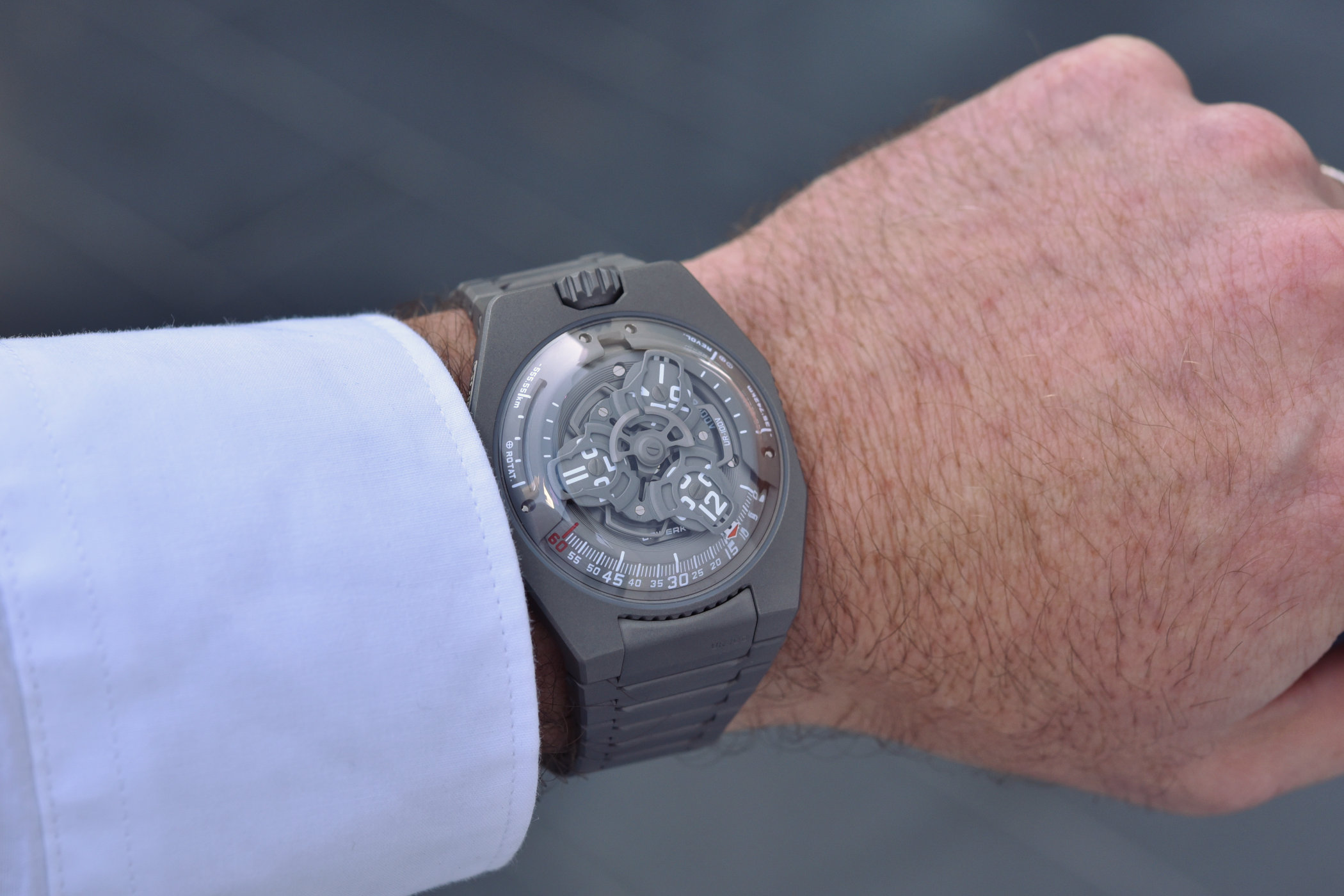
URWERK’S watches fly in the face of most concepts of conventional watchmaking. Here are watches that seem to have been forged in a galaxy far, far away, offering earthlings a novel way to view and experience time. From the sleek, futuristic cases to the dynamic motion of wandering hours or satellite time displays, designer Martin Frei and master watchmaker Felix Baumgartner were convinced there had to be another way of presenting time and, since 1997, embarked on their 21st-century watchmaking odyssey. The latest chapter in the UR-100V saga with unique astronomical indications is written today as Urwerk unveils its Full Titanium Jacket edition of the UR-100 during Dubai Watch Week. Launched just two years ago, the latest UR-100V is sheathed in subtle shades of matte grey and is fitted with a new, custom-made titanium bracelet.
Time and Space
Originally known as the UR-100 Spacetime, the watch relies on the brand’s signature satellite display – with a twist. Frei and Baumgartner wanted to display something more than just the hours and minutes and decided to show the rotation of the Earth and the revolution of the Earth around the Sun in a 20-minute time frame.
A combination of rotating satellites displays the hours and minutes and jumps back to zero in a sharp retrograde way – the satellite carries the current hour on a 120-degree arched track, graduated from 0 to 60, to indicate the minutes until the following hour occurs and the minute module jumps back to zero to be caught by the hour satellite. So far, so good. However, in addition to the hours and minutes, the UR-100V also displays two astronomical indications: distance travelled on Earth (at 10 o’clock), and distance travelled by Earth (at 2 o’clock). The indicators corresponding to these distances are located on a raised grey flange on the top half of the dial. On the left, you can see white inscriptions with 555.55 km and the word ROTAT. (rotation); on the right, also in white, is 35,742 km and the word REVOL. (revolutions).
Basically, it uses the speed of Earth at the equator and the Earth’s orbital speed around the Sun to display the distance travelled from these different perspectives in about 20 minutes. For instance, at the equator, the circumference of the Earth is 40,070 kilometres, and since the day is 24-hours long, the speed is 1,670 km/hour. That gives you the 555.55 km travelled in about 20 minutes shown on the indicator at 10 o’clock. Similarly, the indicator at 2 o’clock shows the distance Earth has travelled around the Sun, a journey spanning some 35,742 km every 20 minutes. Not a lifesaving piece of information, rather an Urwerkian philosophical musing about time and its relationship to astronomy.
Full titanium jacket
Having appeared in titanium and steel cases, followed by gunmetal, gold, iron and a wild version in textured bronze to replicate the scales of T-Rex, the UR-100V returns in a titanium case with a new articulated bracelet. The subtle shades of grey contrast to the clean white inscriptions animated by a touch of red on the arrow-shaped minutes hand and the 60-minute marker on the retrograde minutes track.
According to Martin Frei, whenever he sketches a watch, he always envisions his creations on a metal bracelet, which in his eyes is “an extension of the watch around the wrist…and complements the design perfectly”. The bracelet is exceptionally light and, as Frei points out, it “makes a special sound when you play with its links”. The beautifully articulated bracelet, which tapers elegantly from the lugs to the folding clasp, is composed of 32 sandblasted titanium links to match the texture and colour of the case. Once again, tactility is an essential part of the experience. Titanium “is quite cold when you put it on your wrist”, adds Frei, but “it warms up slowly on contact, acclimatising to you and gently embracing your skin”. The case still has the same specifications – 41mm width x 49.7mm length and 14mm height – but the discreet matte grey surfaces absorb the light and diminish the sensation of volume.
Although the look and feel of the watch is avant-garde, the finishings are incredibly detailed. The carousel and the structure on top of the hours are forged from anodised aluminium then sanded and shot-blasted, while the satellite screws are circular sanded and the screw heads chamfered. In the dark, the UR-100V lights up with blue Super-LumiNova glowing hours and minutes and white glowing astronomical indicators.
Calibre 12.02
The back of the watch reveals the new calibre 12.02. Redesigning the carrousel to bring the hours closer to the minutes as they travel along the 60-minute scale was one of the upgrades made to the original calibre 12.01, making it easier and more intuitive to read the time. The full rotor you can see on the reverse side is drilled and governed by a profiled airscrew known as the Windfänger, a device used to minimise shocks and reduce wear and tear. The carrousel and triple baseplates are elaborated in ARCAP, an alloy that does not contain iron and is not magnetic. The automatic movement has a frequency of 28,800vph and a power reserve of 48 hours.
Availability and Price
The UR-100V Full Titanium Jacket is limited to 25 pieces and retails for CHF 55,000 (excl. tax).
More information at Urwerk.com.

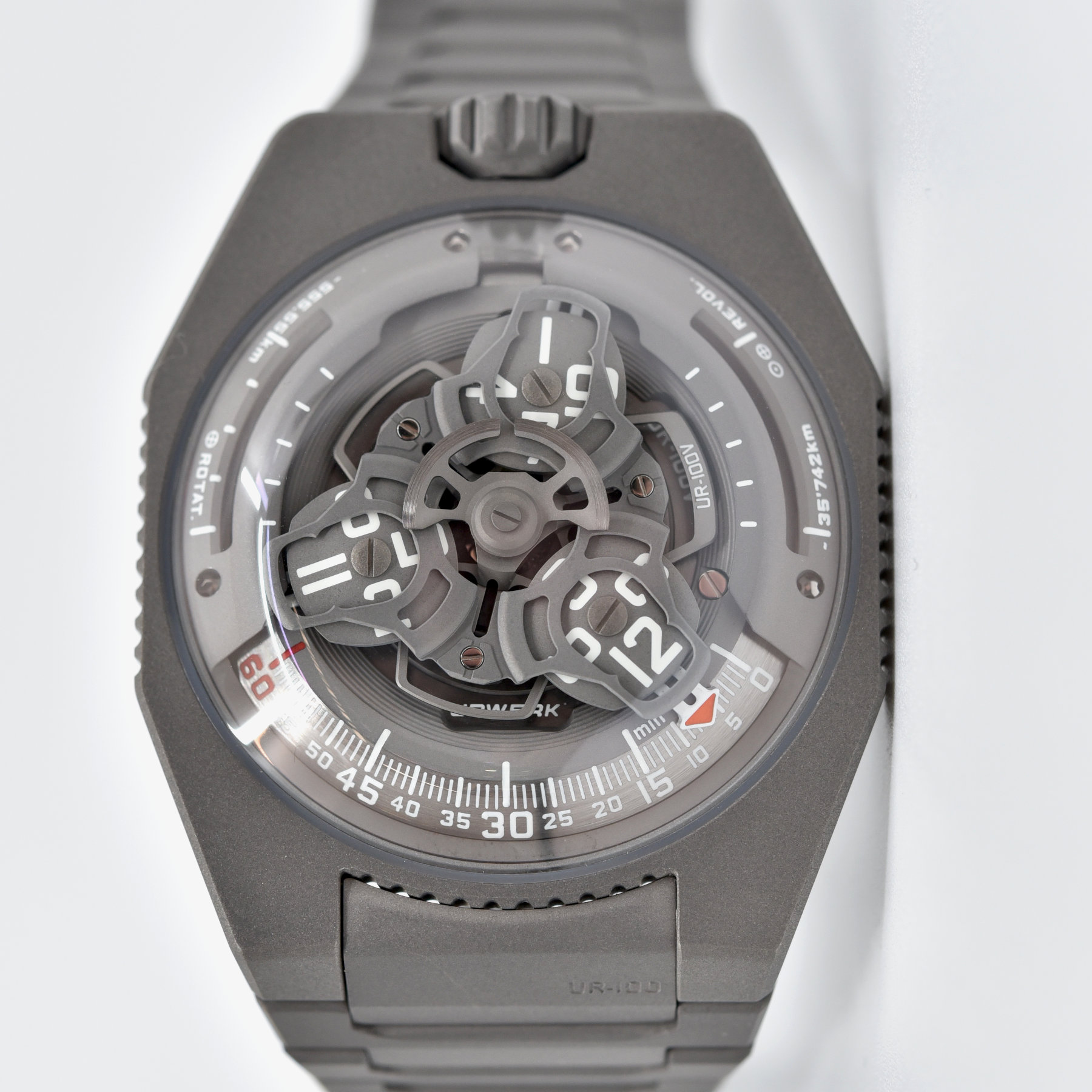
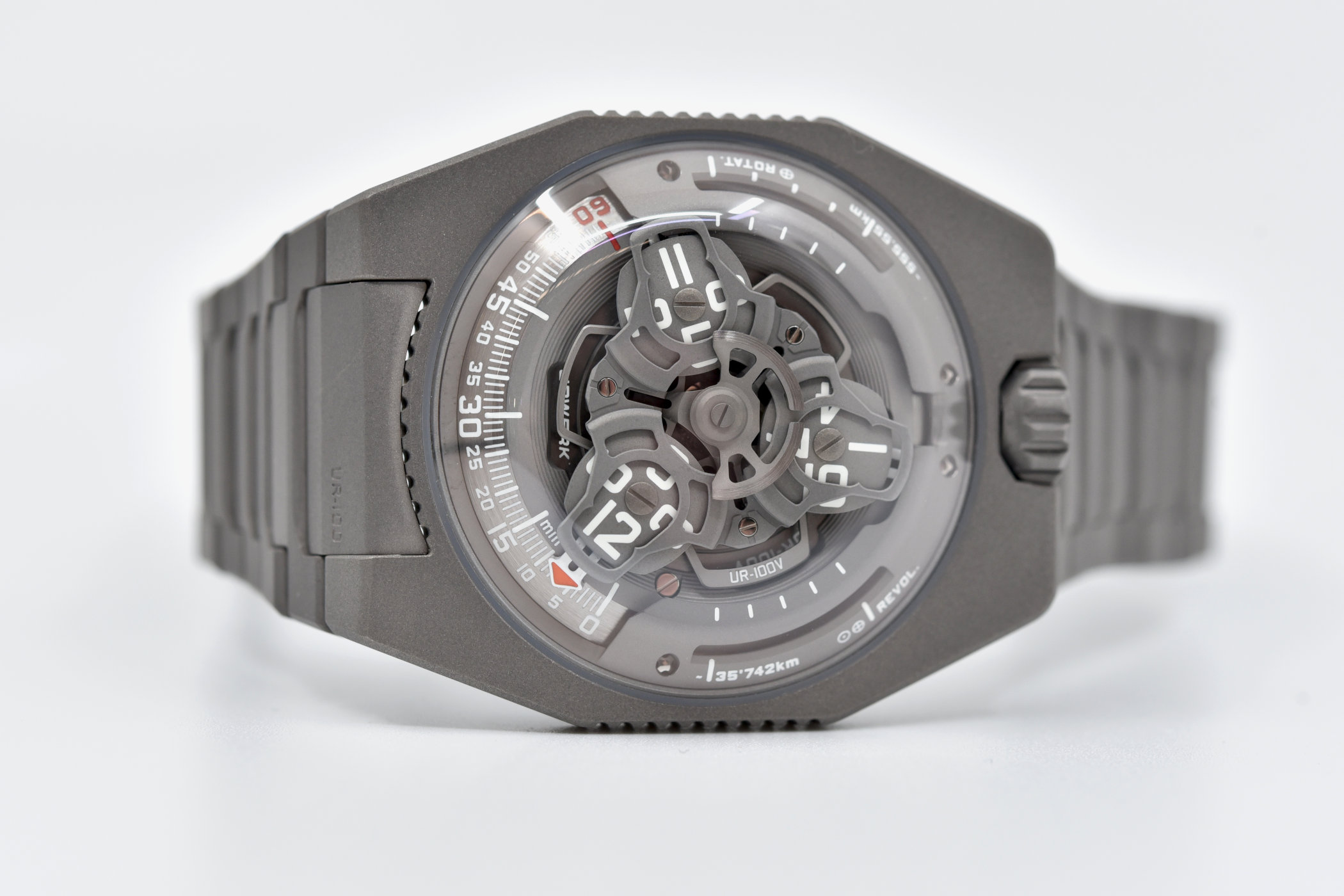
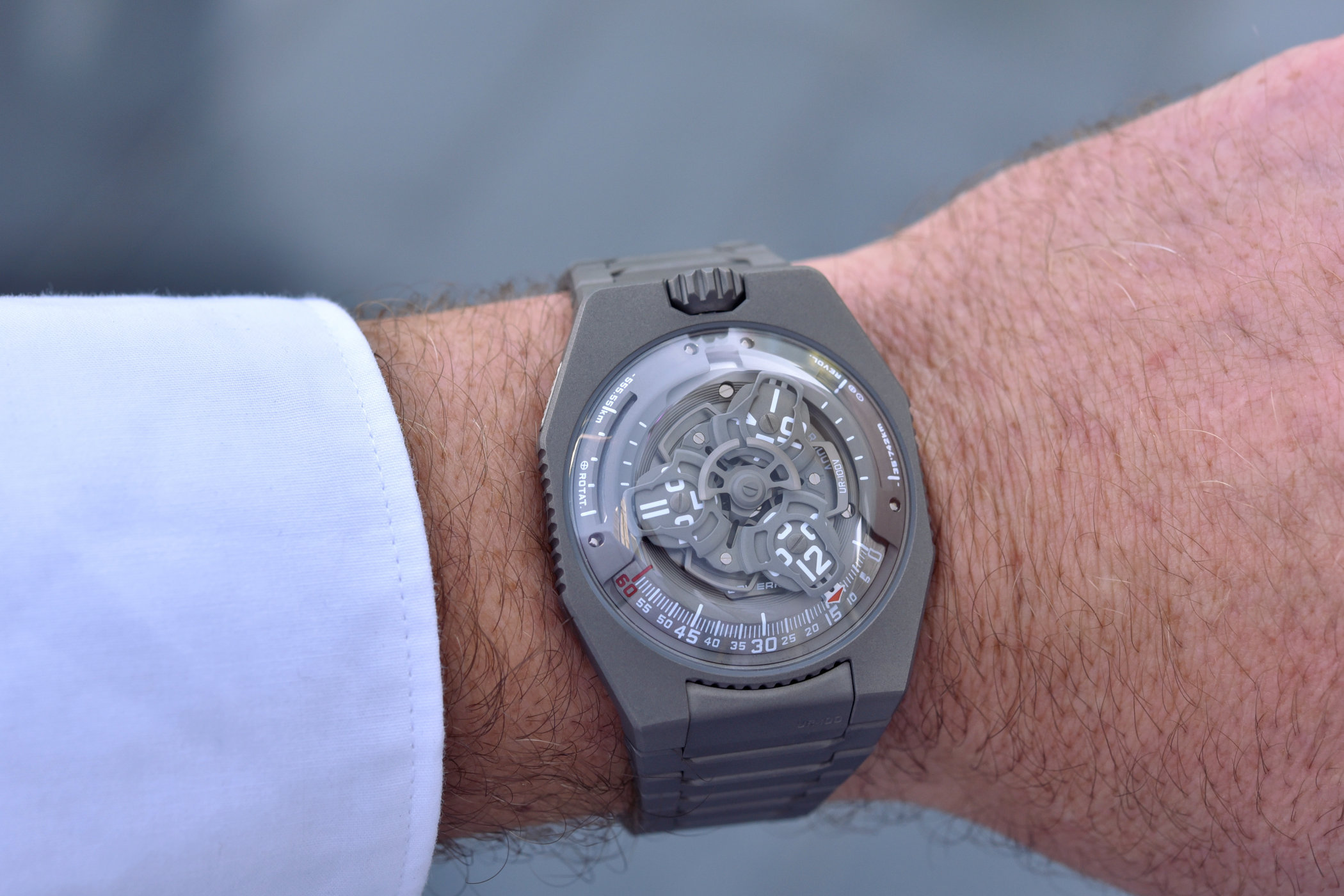

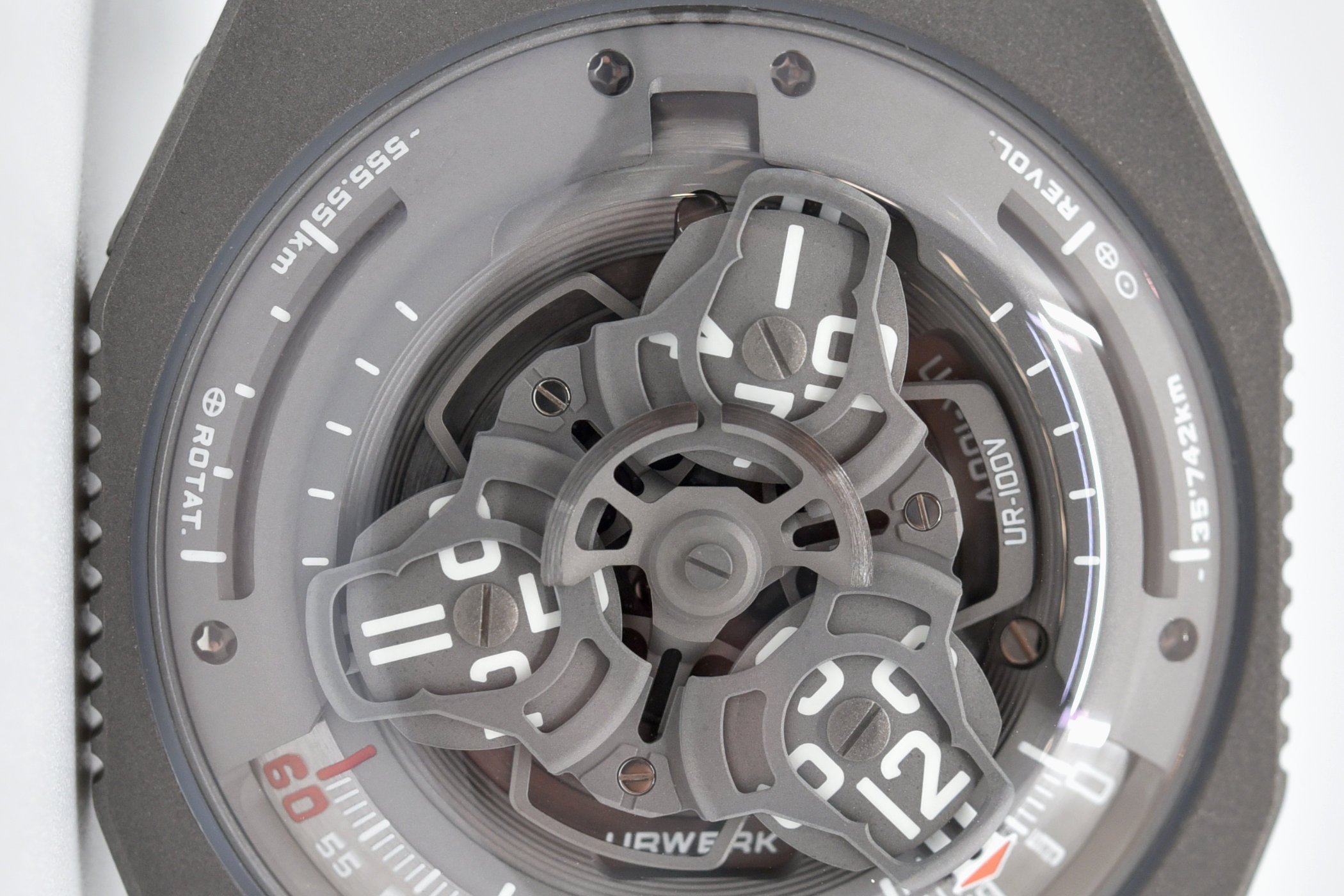


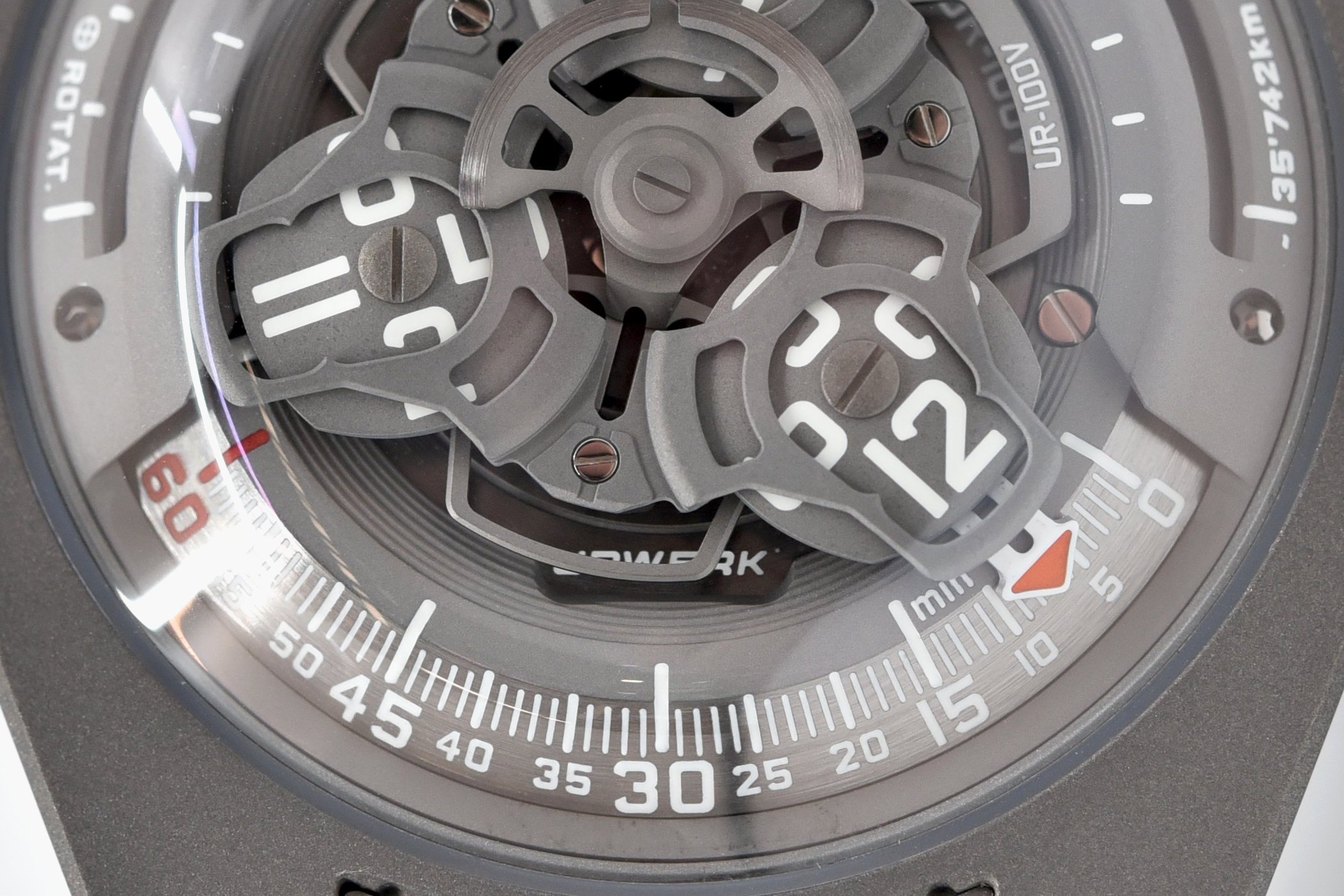
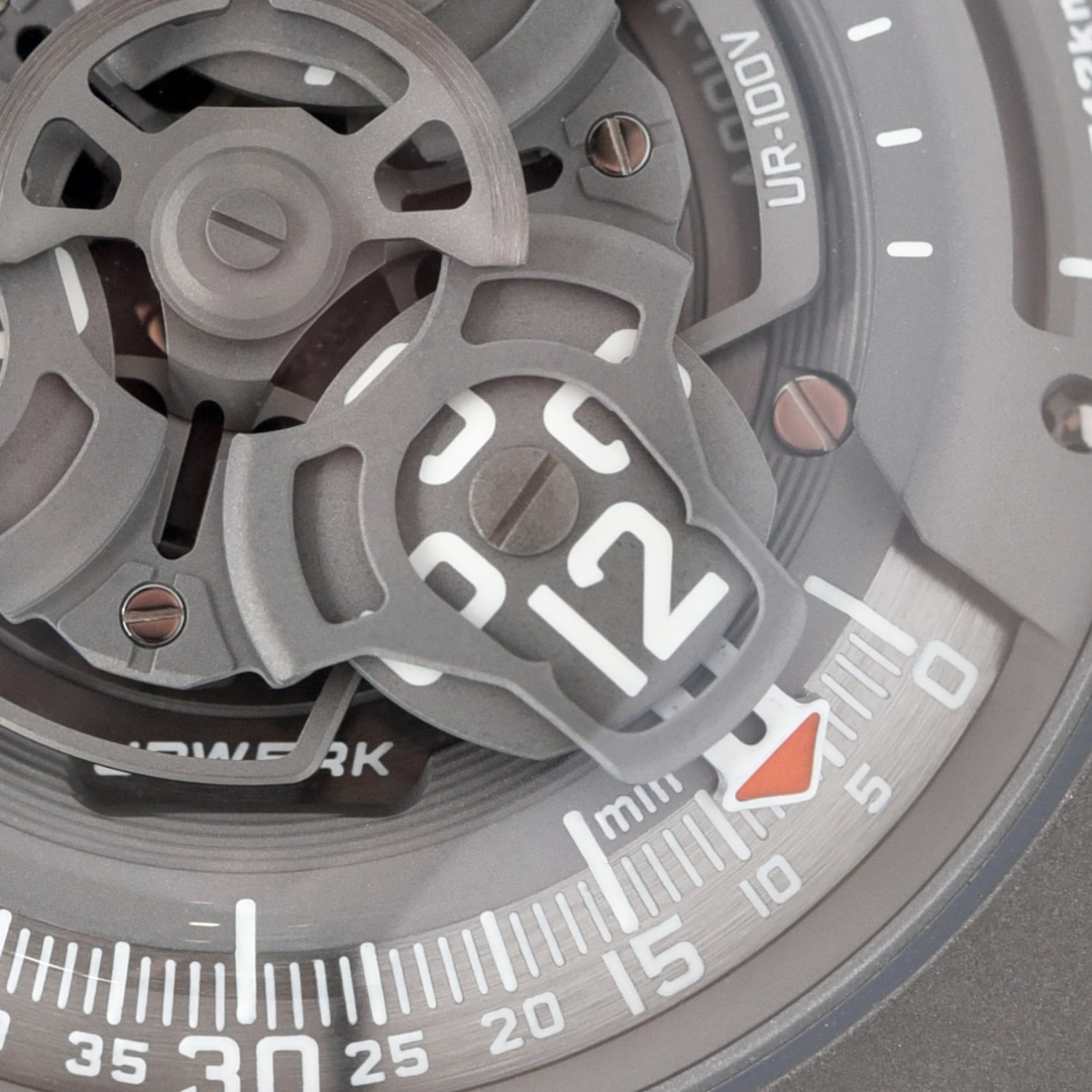
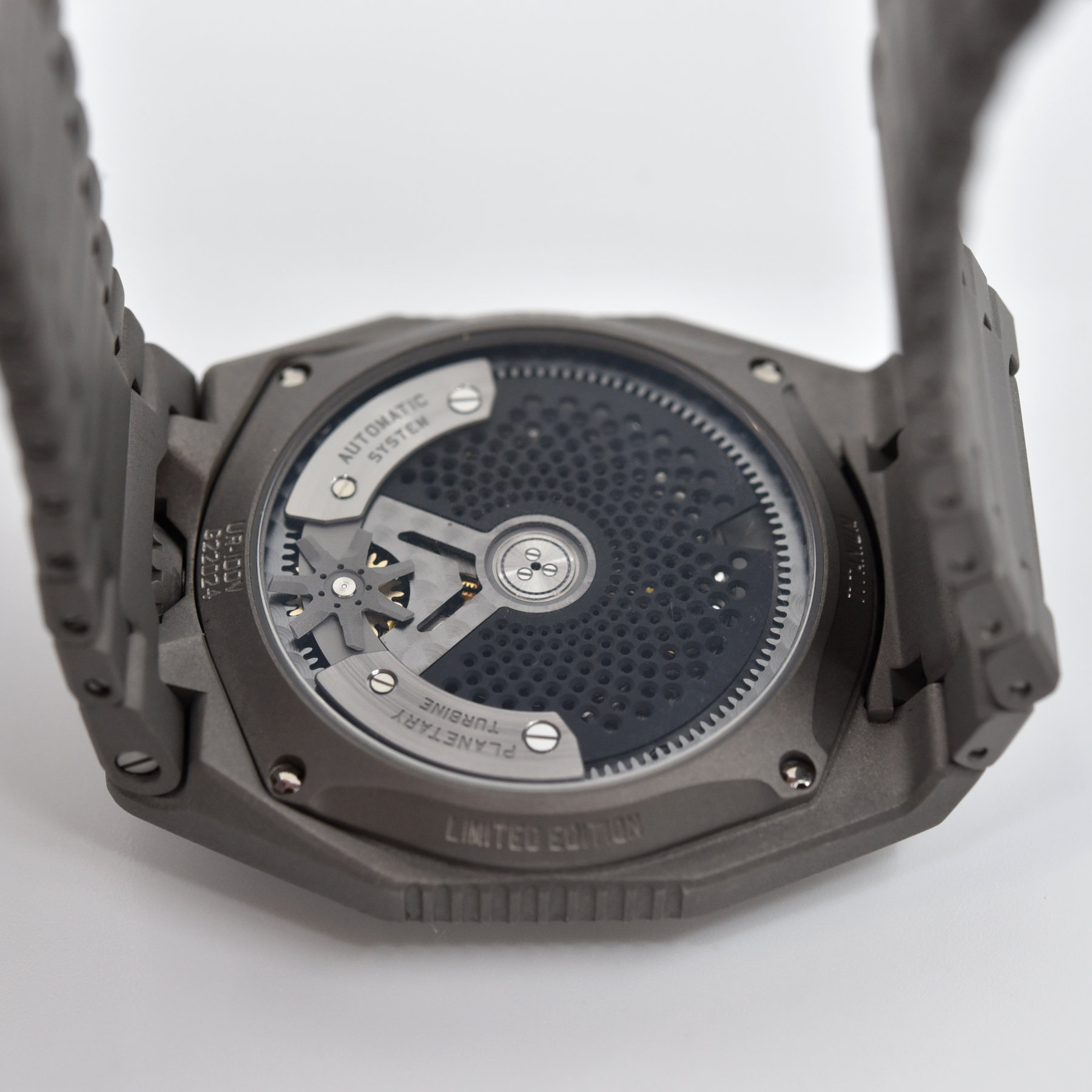
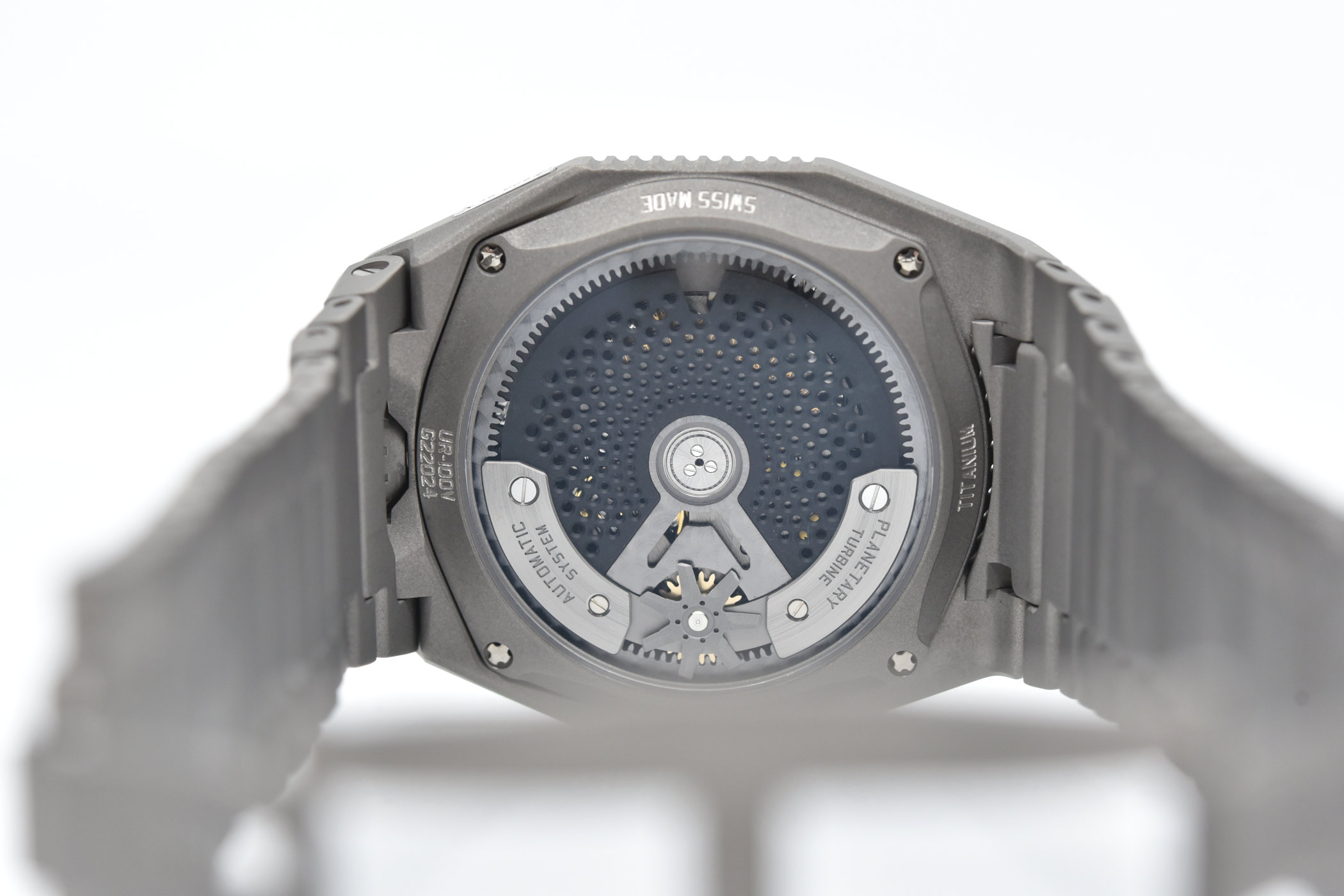



3 responses
First time I’ve absolutely loved an Urwerk. Looks so good on the wristshot.
Yesterday I had a chance to handle this all titanium version and I find it a dream to wear. The bracelet makes the watch so comfortable to wear on my almost18cm wrist.
Can you give more details about the 10 and 2 add-ons? Are these complications? I understood the numbers you mentioned in the article, but do these move and change every 20 minutes or do they stay static? How do the new numbers appear, etc? It’s unclear to me.